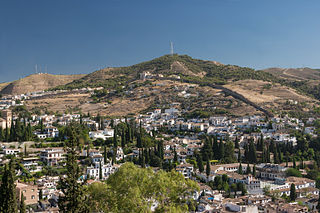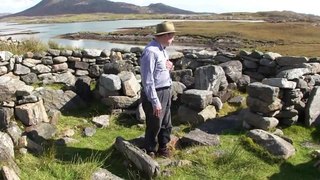 W
WA barabara or barabora (Russian); ulax̂, ulaagamax, ulaq, or ulas (plural) (Aleut); and ciqlluaq were the traditional, main or communal dwelling used by the Alutiiq people and Aleuts, the indigenous people of the Aleutian Islands. They lay partially underground like an earth lodge or pit-house, and most of the house was excavated from the dirt so as to withstand the high forces of wind in the Aleutian chain of islands. Barabaras are no longer used, as present-day Aleuts live in modern houses and apartment buildings.
 W
WA basement or cellar is one or more floors of a building that are completely or partly below the ground floor. It generally is used as a utility space for a building, where such items as the boiler, water heater, breaker panel or fuse box, car park, and air-conditioning system are located; so also are amenities such as the electrical distribution system and cable television distribution point. In cities with high property prices, such as London, basements are often fitted out to a high standard and used as living space.
 W
WThe Church of St Petka of the Saddlers is a medieval Bulgarian Orthodox church in Sofia, the capital of Bulgaria.
 W
WA coal bin, coal store or coal bunker is a storage container for coal awaiting use or transportation. This can be either in domestic, commercial or industrial premises, or on a ship or locomotive tender, or at a coal mine or processing plant.
 W
WA crypt is a stone chamber beneath the floor of a church or other building. It typically contains coffins, sarcophagi, or religious relics.
 W
WIn Ancient Roman architecture a cryptoporticus crypta and porticus) is a covered corridor or passageway. The usual English is "cryptoportico". The cryptoportico is a semi-subterranean gallery whose vaulting supports portico structures aboveground and which is lit from openings at the tops of its arches.
 W
WA dugout or dug-out, also known as a pit-house or earth lodge, is a shelter for humans or domesticated animals and livestock based on a hole or depression dug into the ground. Dugouts can be fully recessed into the earth, with a flat roof covered by ground, or dug into a hillside. They can also be semi-recessed, with a constructed wood or sod roof standing out. These structures are one of the most ancient types of human housing known to archaeologists, and the same methods have evolved into modern "earth shelter" technology.
 W
WAn earth lodge is a semi-subterranean building covered partially or completely with earth, best known from the Native American cultures of the Great Plains and Eastern Woodlands. Most earth lodges are circular in construction with a dome-like roof, often with a central or slightly offset smoke hole at the apex of the dome. Earth lodges are well-known from the more-sedentary tribes of the Plains such as the Hidatsa, Mandan, and Arikara, but they have also been identified archaeologically among sites of the Mississippian culture in the eastern United States.
 W
WAn earth shelter, also called an earth house, earth bermed house, or underground house, is a structure with earth (soil) against the walls, on the roof, or that is entirely buried underground.
 W
WEast Metro Mall is a shopping center located in Da'an District, Taipei, Taiwan. It is the first underground mall in the Eastern District of Taipei, connecting Zhongxiao Dunhua metro station and Zhongxiao Fuxing metro station.
 W
WA ha-ha is a recessed landscape design element that creates a vertical barrier while preserving an uninterrupted view of the landscape beyond from the other side.
 W
WA hogan is the primary, traditional dwelling of the Navajo people. Other traditional structures include the summer shelter, the underground home, and the sweat house. A hogan can be round, cone-shaped, multi-sided, or square; with or without internal posts; timber or stone walls and packed with earth in varying amounts or a bark roof for a summer house, with the door facing east to welcome the rising sun for wealth and good fortune.
 W
WIcelandic turf houses were the product of a difficult climate, offering superior insulation compared to buildings solely made of wood or stone, and the relative difficulty in obtaining other construction materials in sufficient quantities.
 W
WA kiva is a space used by Puebloans for rites and political meetings, many of them associated with the kachina belief system. Among the modern Hopi and most other Pueblo people, kivas are a large room that is circular and underground, and are used for spiritual ceremonies.
 W
WLongshan Temple Underground Shopping Mall is an underground shopping center located in Wanhua District, Taipei, Taiwan. It is located directly below Bangka Park and is connected with Longshan Temple metro station. There are a total of 7 entrances to access the shopping mall from the ground floor. The mall has four levels. Level B1 is a famous fortune-telling street, where some stores also sell lucky charms and daily necessities; level B2 sells a variety of commodities, such as exquisite cultural goods and snacks, souvenirs, etc. Levels B3 and B4 are used as a public parking lot.
 W
WA pit house is a large house in the ground used for shelter. Besides providing shelter from the most extreme of weather conditions, these structures may also be used to store food and for cultural activities like the telling of stories, dancing, singing and celebrations. General dictionaries also describe a pit-house as a dugout, and it has similarities to a half-dugout.
 W
WQargi, Qasgi or Qasgiq, Qaygiq, Kashim, Kariyit, a traditional large semi-subterranean men's community house' of the Yup'ik and Inuit, also Deg Hit'an Athabaskans, was used for public and ceremonial occasions and as a men’s residence. The Qargi was the place where men built their boats, repaired their equipment, took sweat baths, educated young boys, and hosted community dances. Here people learned their oral history, songs and chants. Young boys and men learned to make tools and weapons while they listened to the traditions of their forefathers.
 W
WA quiggly hole, also known as a pit-house or simply as a quiggly or kekuli, is the remains of an earth lodge built by the First Nations people of the Interior of British Columbia and the Columbia Plateau in the U.S. The word quiggly comes from kick willy or keekwulee, the Chinook Jargon word for "beneath" or "under".
 W
WA root cellar or earth cellar is a structure, usually underground or partially underground, used for storage of vegetables, fruits, nuts, or other foods. Its name reflects the traditional focus on root crops stored in an underground cellar, which is still often true. A wide variety of foods can be stored for weeks to months, depending on the crop and conditions. The structure may not always be underground.
 W
WSacromonte, sometimes also called Sacramonte, is a traditional neighbourhood in the eastern area of the city of Granada in Andalusia, Spain. It is one of the six neighbourhoods that make up the urban district of Albayzín and borders the neighbourhoods of Albayzín, San Pedro, Realejo-San Matías, El Fargue and Haza Grande.
 W
WSkara Brae is a stone-built Neolithic settlement, located on the Bay of Skaill on the west coast of Mainland, the largest island in the Orkney archipelago of Scotland. Consisting of ten clustered houses, made of flagstones, in earthen dams that provided support for the walls; the houses included stone hearths, beds, and cupboards. A primitive sewer system, with "toilets" and drains in each house, carried effluent to the ocean.
 W
WStation Front Metro Mall is an underground shopping center located in Zhongzheng District, Taipei, Taiwan. It is located directly underneath Zhongxiao West Road and is connected with Taipei Main Station.
 W
WTaipei City Mall is a shopping center located at the intersection of the Daan and Zhongzheng districts in Taipei, Taiwan. It is the first underground market in Taipei City. It is located under Civic Boulevard, Section 1.
 W
WUnderground living refers to living below the ground's surface, whether in natural or manmade caves or structures. Underground dwellings are an alternative to above-ground dwellings for some home seekers, including those who are looking to minimize impact on the environment. Factories and office buildings can benefit from underground facilities for many of the same reasons as underground dwellings such as noise abatement, energy use, and security.
 W
WIn archaeology, a wheelhouse is a prehistoric structure from the Iron Age found in Scotland. The term was first coined after the discovery of a ruined mound in 1855. The distinctive architectural form related to the complex roundhouses constitute the main settlement type in the Western Isles in the closing centuries BC. A total of 62 sites have now been identified in the Northern and Western Isles, and on the north coast of Caithness and Sutherland.
 W
WXimen Metro Mall is an underpass located in Wanhua District, Taipei, Taiwan. It is located directly underneath Zhonghua Road and is connected with Ximen metro station.
 W
WA yaodong or "house cave" is a particular form of earth shelter dwelling common in the Loess Plateau in China's north. They are generally carved out of a hillside or excavated horizontally from a central "sunken courtyard".
 W
WThe Zhongshan Metro Shopping Mall is an extensive underground shopping mall in Zhongshan District and Datong District, Taipei, Taiwan. It is located at Changan West Rd., No. 52-1. The mall stretches from Taipei Main Station in the south to Shuanglian Station in the north.